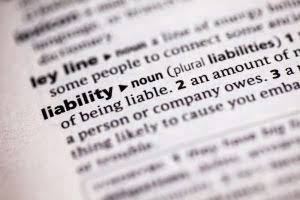
In contrast, this expense might be significantly lower if the business is considering an increase from 150 to 151 units using existing equipment. For example, suppose the price of a product is $10 and a company produces 20 units per day. The total revenue is calculated by multiplying the price by the quantity produced.
Relationship between marginal cost, total cost, and variable cost

Marginal cost refers to the additional cost to produce each additional unit. Therefore, that is the marginal cost – the additional cost to produce one extra how is marginal cost (mc) calculated unit of output. The marginal cost of production measures the change in the total cost of a good that arises from producing one additional unit of that good.

Determining the Change in Quantity
- If you can sell an item for more than it costs you to produce, you stand to see increased profits.
- This can be a significant advantage in attracting price-sensitive customers.
- Marginal cost is the change in the total cost of production by producing one additional unit of output.
- However, fixed costs remain constant regardless of how many units you produce.
- Economies of scale apply to the long run, a span of time in which all inputs can be varied by the firm so that there are no fixed inputs or fixed costs.
- In this simple example, the total cost per hat would be $2.75 ($2 fixed cost per unit + $0.75 variable costs).
This calculation shows that each additional unit costs $30 to produce. This figure helps you decide whether producing more is financially viable, as it needs to be compared against the additional revenue one more unit would bring. Marginal cost highlights the premise that one incremental unit will be much less expensive if it remains within the current relevant range. However, additional step costs or burdens to the existing relevant range will result in materially higher marginal costs that management must be aware of.
Perfectly competitive supply curve
As you increase production, your total cost increases due to the rise in variable costs. However, fixed costs remain constant regardless of how many units you produce. Performing a marginal cost analysis allows your company to maximize profits by ensuring you produce enough products to meet demand without overproducing.

Formula and Calculation of Marginal Cost
In other words, additional production causes fixed and variable costs to increase. For example, increased production beyond a certain level may involve paying prohibitively high amounts of overtime pay to workers. Alternatively, the maintenance costs for machinery may significantly increase. When the MC curve reaches its minimum level, it indicates that the company has reached its optimal level of production, and every additional unit after that could be a reason for an increase in the losses.
Economies of Scale (or Not)
- Fixed costs are the relatively stable, ongoing costs of operating a business that are not dependent on production levels.
- In this case, an increased cost of production in society creates a social cost curve that depicts a greater cost than the private cost curve.
- For example, suppose the price of a product is $10 and a company produces 20 units per day.
- For example, management may be incurring $1,000,000 in its current process.
- Examples of variable costs include raw materials, wages for production line workers, shipping costs, commissions, etc.
- To illustrate, say you own a millwork company that produces wood doors, molding, paneling and cabinets.
A consumer may consume a good which produces benefits for society, such as education; because the individual does not receive all of the benefits, he may consume less than efficiency would suggest. Alternatively, an individual may be a smoker or alcoholic and impose costs on others. In these cases, production or consumption of the good in question may differ from the optimum level. Enter your email and we’ll send you this exclusive marginal cost formula calculator in Excel for yours to keep. The total change in cost is $5k, while the total change in production is 100 units.
Marginal cost and production decisions
You may find a marginal cost calculator under different names, such as an incremental cost calculator or a differential cost calculator, but they are all related to the same topic. However, marginal cost is not the same as margin cost described in our margin calculator! In this article, you can https://www.bookstime.com/ find more details on how to calculate the marginal cost and the marginal cost formula behind it. In this case, there was an increase from $50,000 to $75,000 – which works out as an increase of $25,000. Then we calculate the change in quantity which increases from 10 to 15; an increase of 5.
How Important is Marginal Cost in Business Operations?
By closely tracking your marginal cost, you can identify the point at which producing one more unit becomes more expensive than it’s worth. Returning to our millwork company example above, say you normally produce 240 doors per year at a cost of $24,000. However, you’ve discovered that market demand for your doors is significantly higher, and you want to produce an additional 100 doors next year. In an equilibrium state, markets creating negative externalities of production will overproduce that good. As a result, the socially optimal production level would be lower than that observed.
What are Marginal Cost and Marginal Revenue?

